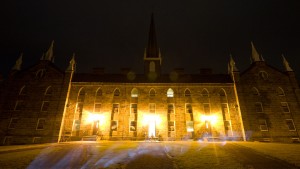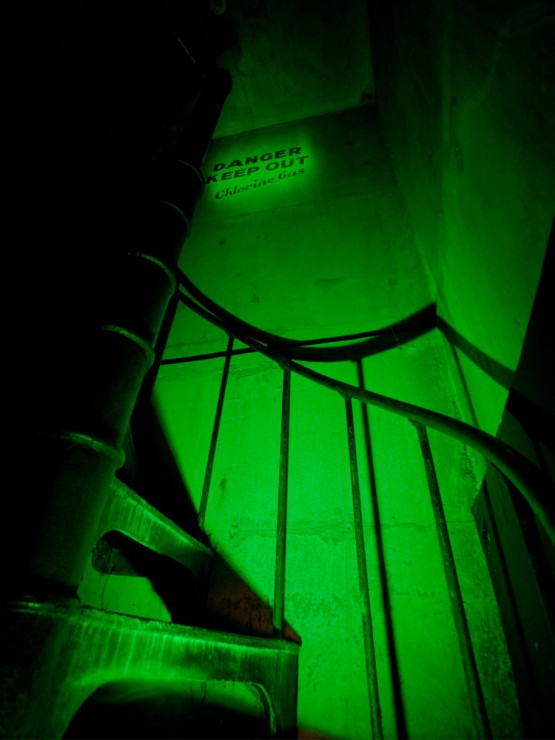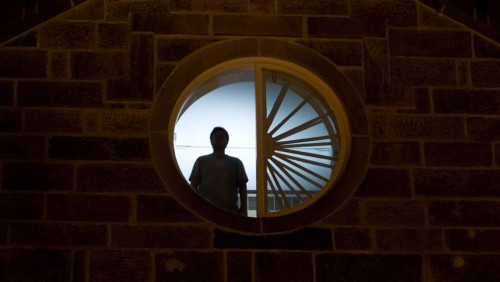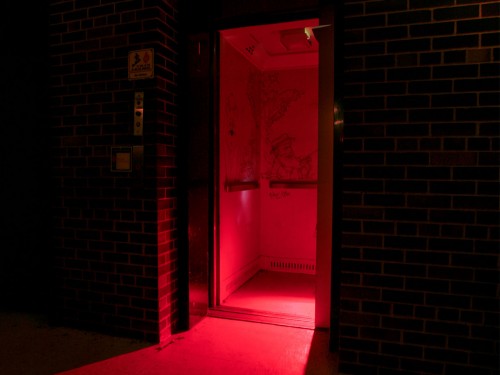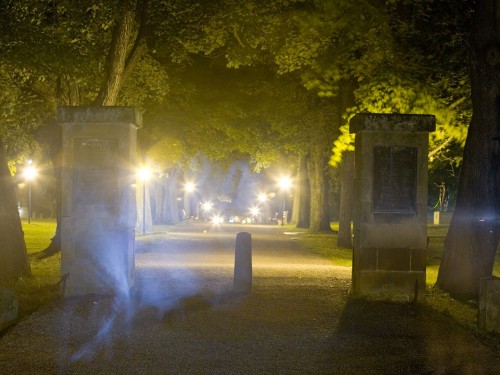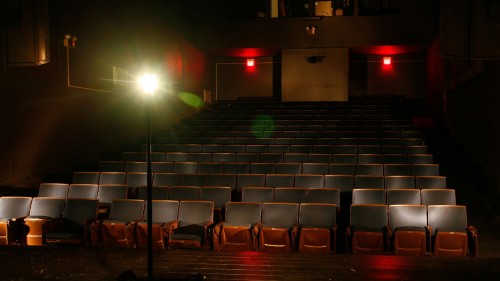A version of this article first appeared in the fall 2007 edition of the Alumni Bulletin, now downloadable in Kenyon's digital archive.
Several ghost stories have been introduced to a new platform — check out the 2021 Haunted Kenyon video series on TikTok or Facebook.
At Kenyon, tales of haunted hallways pass from generation to generation, a richly embroidered folklore on a campus that can sometimes feel, well, eerie.
Some Kenyon ghost stories grew out of actual events, like the Old Kenyon Fire, while others have shakier credentials. Reading through the "ghosts folder" in the College archives, I found the phrase "it is said" used a good deal. That can be a stand-in for "as if." It is said brokers a deal between the teller and the listener: It's probably nonsense, but let's tell the story anyway. After all, dinner's over and who wants to go study?
If you're hunting for Kenyon ghost stories, the first thing you discover is that the mother lode of paranormality can be found in the campus safety office, aka security. Safety officers are in creepy old buildings late at night, and they patrol a ghost town in the summer, at least in between visits from barbershoppers, cheerleaders, and other summer groups. The officers will tell you everything as long as you ply them with margaritas. And they keep incident reports, which is kind of like Deep Throat providing receipts.
Theater people are also good sources, because they're practiced in "suspending their disbelief" and they're always building or rehearsing something in the wee hours of the morning. They subscribe to archaic superstitions, urge each other to break their legs, and never utter the name of the Scottish play (I can't even type it). They leave a light burning on-stage, which is either for the ghosts or to keep away the ghosts, nobody's entirely clear on that; and they do famous plays which are predicated upon somebody seeing a ghost that tells them to do stuff.
Hungry for bonding rituals, fraternities and sports teams also go in for the ghost stories.
The DKE's consider Stuart Pierson, the notorious turn-of-the-century train fatality, a fraternity brother. On the anniversary of "Stewie's" death, they carry a coffin filled with stones down Middle Path and gather at the fateful trestle bridge, where fraternity officers wearing hooded cloaks read the coroner's report by torchlight. (In recent years, they've also read aloud passages from P.F. Kluge's "Alma Mater.")
Where, you ask, do they get the hooded cloaks? I forgot to ask. But I know the ceremony ends with the burning of a wooden DKE sign, which they extinguish in the river, leaving its ashes behind on the train tracks. (After that, I'm pretty sure they go party.)
And then there's the swimming team. Although they now compete in the airy, ultra-modern athletic enter, the swimmers still venture down the spiral stairs into the Shaffer boiler-room the night before they leave for nationals. By candlelight, one of the seniors tells the story of "The Greenhouse Ghost," the diver who broke his neck on the glass roof and drowned in Shaffer Pool.
The team members crouch to walk the perimeter of the old pool and end by counting off the number of their national titles, adding one, like a birthday-cake candle to grow on. Swimmer Michael Northcutt '08 says the ritual "is an awesome reminder of those that swam before us." Or perhaps, as former Dean Tom Edwards puts it, "That boiler-room would scare anybody" into team solidarity.
Kenyon's ghost stories function partly as cautionary tales — about fraternity hazing and the dangers of fire, as well as about bouncing too high on a diving board under a glass roof. As tales of premature death, they're also reminders to enjoy one's youth. And, in their telling and retelling, they forge links in the chain (clank, clank) of our shared history.
Do I believe these stories? Yes and no. Perhaps Professor of Humanities Tim Shutt, the tour guide of ghostly Kenyon, puts it best: "Many Kenyon students, past and present, claim to have encountered ghosts. And in the large majority of cases, I do believe in their belief."
